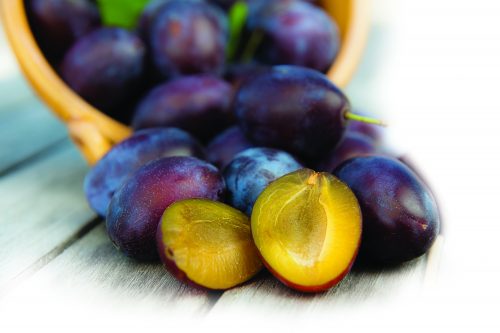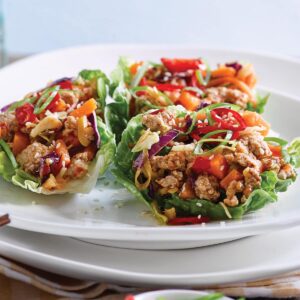
This smooth-skinned, sweet and succulent stone fruit is one of the only fruits that comes in such a diverse range of colours.
Plums are a summer fruit, with yellow-fleshed plums available early in the season. Yellow-fleshed plums can have red, dark-blue, yellow or a mottled skin colour. Good quality plums may still have a dusty white coating known as the ‘wax bloom’, showing the plum hasn’t been over-handled. The New Zealand varieties of yellow-fleshed plums include Wilson’s Early, Burbank, Purple King, Santa Rosa, Duff’s Early Jewel, Fortune and Red Doris.
Buying
Select plums free from bruising and/or wrinkly or split skin. Choose firm plums to ripen at home but avoid excessively hard plums as they may not develop a good flavour.
Storing
Leave unripe plums at room temperature and refrigerate once they are ripe. You can also freeze plums but remove the stone beforehand for maximum taste.
Nutrition
The red-skinned varieties contain a class of compounds called anthocyanins, which are being investigated for a range of potential health benefits.
Using
- Make plum crumble by topping pitted plums with a mixture of oats, flour, reduced-fat spread, sugar and mixed spice. Bake until golden brown.
- Eat ripe plums at room temperature for maximum juiciness and sweetness.
- Add plums to breakfasts — in smoothies or bircher muesli or with cereal and yoghurt.
- Oven-bake plums: pit plums, sprinkle with cinnamon and sugar then bake until tender.
- Stew plums with water and sugar to make a light refreshing compote. Compote is excellent with rice pudding, custard, low-fat yoghurt, cakes or cereal.
- Make jam by boiling plums and sugar in a 2:1 ratio, with some lemon juice.
- Add sliced plums to a summer salad for a sweet twist.
- Grill prosciutto-wrapped plums for an entrée when entertaining.
Did you know? The skin of the plum is responsible for its laxative effect. Peeling the fruit will prevent this side effect.
www.healthyfood.com










